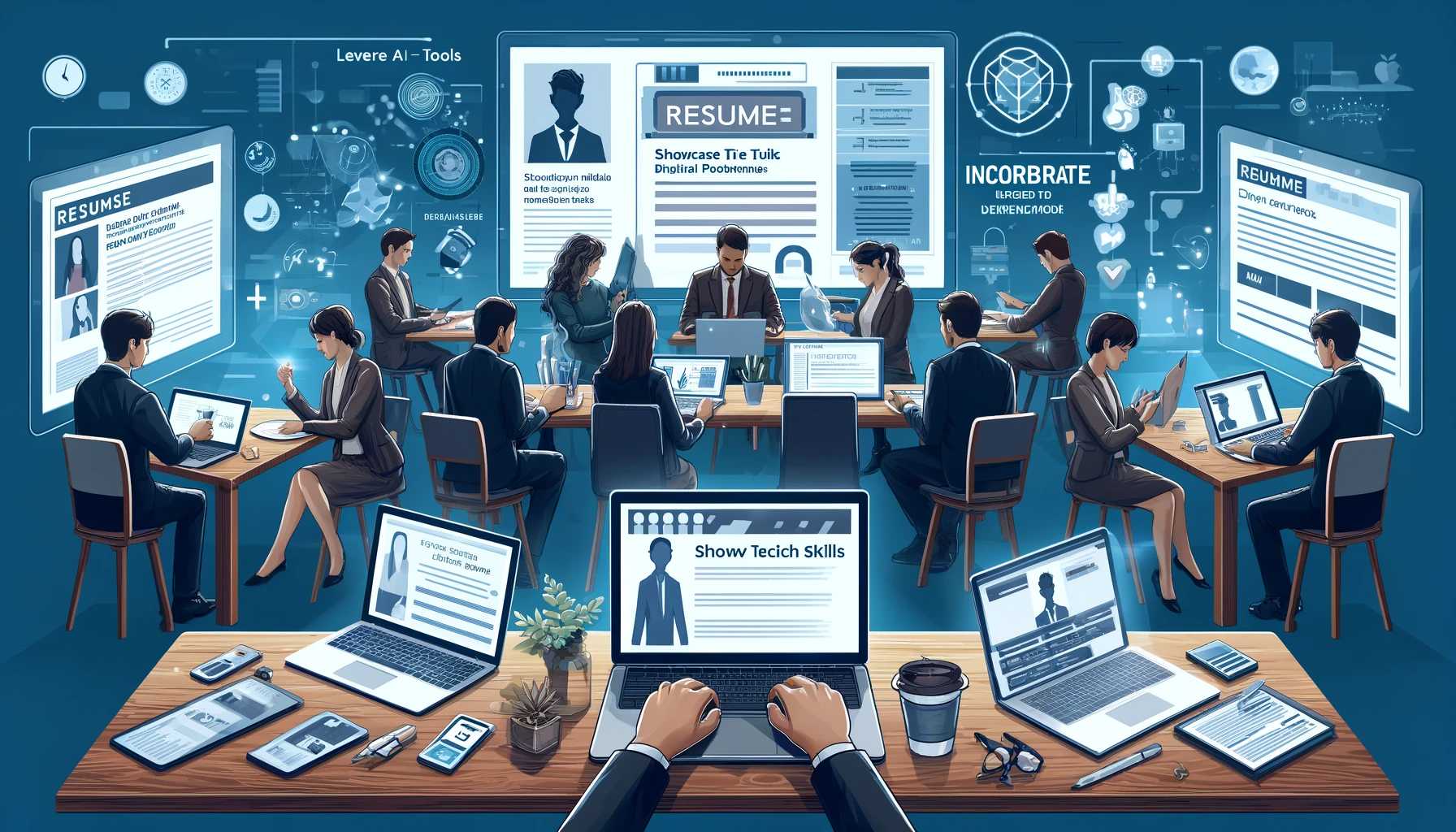The Fusion of Tech and Talent: How Latest Technological Advancements Are Shaping Resume Writing
In today's digitally-driven world, the intersection of technology and talent acquisition is undergoing a profound transformation. As job markets become increasingly competitive, individuals are leveraging cutting-edge tools and techniques to craft resumes that stand out amidst the crowd. This dynamic landscape is fueled by the rapid evolution of technology, which continuously introduces new trends and advancements shaping the way resumes are created, formatted, and evaluated. In this blog post, we delve into the latest technological advancements and trends impacting resume writing, exploring how they empower job seekers to present their skills and experiences in the most compelling light.
1. AI-Powered Resume Builders:
AI-powered resume builders have revolutionized the way resumes are crafted. These sophisticated platforms employ artificial intelligence algorithms to analyze job descriptions, extract relevant keywords, and suggest personalized content. By harnessing the power of natural language processing (NLP) and machine learning, these tools help job seekers optimize their resumes for specific roles and industries, enhancing their chances of catching the attention of recruiters.
2. Visual Resumes and Infographics:
In the age of information overload, visual resumes and infographics have emerged as powerful tools for conveying complex information in a concise and engaging manner. With the rise of design software and online visualization tools, job seekers can now create visually stunning resumes that showcase their skills, experiences, and achievements in a visually compelling format. Infographics allow for the integration of charts, graphs, and icons, providing recruiters with a quick and visually appealing overview of the candidate's qualifications.
3. ATS Optimization:
As the use of Applicant Tracking Systems (ATS) becomes ubiquitous in the recruitment process, job seekers are increasingly focusing on optimizing their resumes for these automated systems. ATS optimization involves strategically incorporating relevant keywords, formatting the document for readability, and avoiding common pitfalls such as excessive graphics or unconventional fonts. By aligning their resumes with ATS requirements, candidates can improve their chances of passing the initial screening process and reaching the hands of hiring managers.
4. Personal Branding Websites:
Personal branding websites have emerged as a popular tool for job seekers to showcase their professional portfolio, accomplishments, and expertise in a centralized online platform. These websites often include elements such as a professional bio, work samples, testimonials, and links to social media profiles. By curating a compelling online presence, candidates can differentiate themselves from the competition and leave a lasting impression on potential employers.
5. Video Resumes:
In an era where visual content dominates the digital landscape, video resumes have gained traction as a creative way for job seekers to introduce themselves to prospective employers. Video resumes allow candidates to showcase their personality, communication skills, and enthusiasm for the role in a dynamic and engaging format. With the proliferation of video editing tools and video-sharing platforms, creating a professional-looking video resume has never been easier.
6. Blockchain-Based Credentials:
Blockchain technology is revolutionizing the way credentials are verified and shared, offering a secure and tamper-proof method for validating educational qualifications, certifications, and work experience. By storing credentials on a decentralized blockchain network, job seekers can provide employers with irrefutable proof of their skills and credentials, eliminating the need for third-party verification processes. Blockchain-based credentials also enhance transparency and trust in the hiring process, fostering a more efficient and meritocratic system.
7. Automated Resume Screening:
With the increasing volume of job applications received by companies, recruiters are turning to automated resume screening solutions to streamline the candidate selection process. These AI-powered tools use machine learning algorithms to analyze resumes, identify top candidates, and predict their likelihood of success in the role. By automating repetitive tasks such as resume screening, recruiters can focus their time and energy on more strategic activities, ultimately leading to faster hiring decisions and better outcomes for both employers and candidates.
8. Virtual Reality (VR) Resumes:
Virtual reality (VR) technology is pushing the boundaries of traditional resume formats by offering immersive experiences that allow recruiters to interact with candidates in virtual environments. VR resumes enable candidates to showcase their skills and experiences in a highly engaging and interactive manner, providing a unique opportunity to demonstrate their creativity and technical proficiency. While still in the early stages of adoption, VR resumes hold the potential to revolutionize the recruitment process by providing recruiters with a more immersive and memorable way to evaluate candidates.
Conclusion:
As technology continues to evolve at a rapid pace, so too does the landscape of resume writing. From AI-powered resume builders to blockchain-based credentials and virtual reality resumes, the latest technological advancements are empowering job seekers to create resumes that are not only visually impressive but also strategically optimized for success in today's competitive job market. By embracing these trends and leveraging the power of technology, individuals can maximize their chances of standing out amidst the sea of applicants and landing their dream job.









